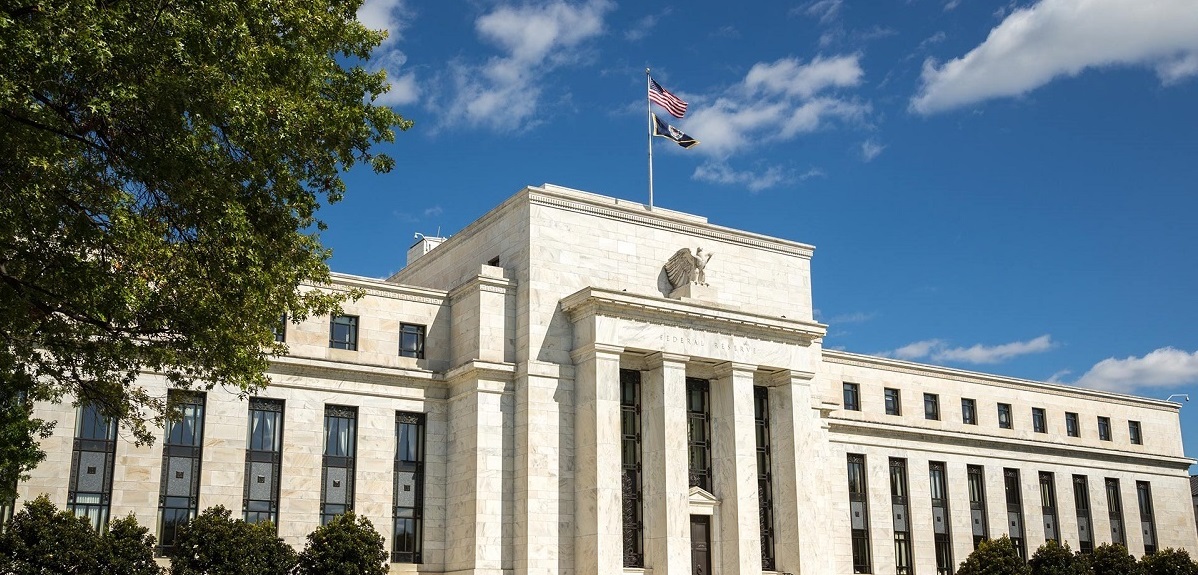Introduction
The central banking system plays a crucial role in the functioning of modern economies. It serves as the backbone of a country’s financial system, regulating and controlling the money supply, setting interest rates, and acting as a lender of last resort. Understanding the central banking system is vital for grasping how monetary policy influences economic stability and growth.
A central bank is a specialized institution responsible for managing a country’s money supply and ensuring the stability of its financial system. It acts as the banker and advisor to the government, commercial banks, and other financial institutions. By exercising its control over monetary policy, a central bank can influence key economic variables such as inflation, employment levels, and interest rates.
The primary functions of a central bank include maintaining price stability, promoting economic growth, ensuring the stability of the financial system, and acting as a lender of last resort during times of financial crisis. Central banks have the authority to issue and regulate the national currency, conduct open market operations, and control the reserve requirements for commercial banks.
The structure of a central bank typically consists of a board of directors or a governing council, headed by a governor or president. These individuals are appointed by the government or have autonomy to make decisions regarding monetary policy. Central banks also collaborate with other international financial institutions to coordinate global monetary policies.
Monetary policy is a key tool used by central banks to manage the money supply and target specific macroeconomic objectives. By adjusting interest rates, controlling the reserve requirements for banks, and conducting open market operations, central banks can influence borrowing and spending behavior, impacting economic activity.
Some of the main tools employed by central banks to implement monetary policy include open market operations, where the central bank buys or sells government bonds to influence the money supply, and changes in reserve requirements, which affect the amount of money banks need to hold in reserve. Central banks also use interest rate adjustments, such as lowering rates to stimulate borrowing and spending or raising them to control inflation.
The role of the central bank in the economy is multi-faceted. It not only aims to maintain price stability but also strives to promote sustainable economic growth and employment. Central banks act as financial advisors to governments, providing macroeconomic analysis and guidance on fiscal policies. They also act as regulators, ensuring the stability and integrity of the financial system.
While the central banking system plays a crucial role in stabilizing economies, it is not without its criticisms. Some argue that central banks have too much power and lack transparency and accountability. Others suggest that central banks’ policies can exacerbate income inequality and create asset bubbles. Additionally, the ability of central banks to predict and react to complex economic dynamics has been called into question.
In recent years, central banks have faced new challenges, such as low inflation rates, unconventional monetary policies, and the rise of digital currency. The future of the central banking system will require adaptation and innovation to navigate these emerging trends and maintain economic stability.
Definition of Central Banking System
The central banking system refers to the set of institutions and mechanisms that a country’s government establishes to manage and control its monetary system. It is responsible for regulating the money supply, setting interest rates, and maintaining the stability of the financial system.
A central bank is the core institution within the central banking system. It is typically a government-owned or quasi-governmental entity that operates independently from political influence. The central bank’s primary objective is to achieve price stability, ensuring that inflation remains at a controlled and sustainable level.
The central bank acts as the custodian of a country’s currency and is responsible for issuing and regulating it. It oversees the commercial banking sector, has the authority to establish reserve requirements, and acts as a lender of last resort to financial institutions in times of crisis.
One important feature of the central banking system is its ability to conduct monetary policy. This involves managing the money supply and interest rates to achieve macroeconomic goals, such as controlling inflation, promoting economic growth, and maintaining employment levels.
The central bank also plays a crucial role in maintaining financial stability. It monitors the health and soundness of commercial banks and other financial institutions, ensuring they adhere to regulations and guidelines. In times of financial distress, the central bank can provide liquidity and support to prevent systemic risks and maintain confidence in the financial system.
The central banking system operates in conjunction with other institutions and stakeholders, including the government, regulatory bodies, and market participants. While central banks have a level of independence in their decision-making, they often collaborate with these entities to formulate and implement appropriate monetary and regulatory policies.
Overall, the central banking system serves as the backbone of a country’s financial infrastructure. It provides the necessary framework and tools for managing monetary policy, regulating the financial sector, and maintaining stability in the economy. By controlling the money supply and influencing interest rates, central banks have a significant impact on inflation, economic growth, and the overall health of the financial system.
Functions of a Central Bank
The central bank performs several crucial functions within a country’s financial system. These functions are aimed at maintaining the stability of the economy and ensuring the smooth functioning of the monetary system. Here are the key functions of a central bank:
- Monetary Policy: One of the primary functions of a central bank is to formulate and implement monetary policy. By controlling the money supply, the central bank can influence interest rates, inflation rates, and the overall health of the economy. Through its monetary policy decisions, the central bank seeks to achieve price stability, promote economic growth, and maintain a stable financial system.
- Banker to the Government: The central bank acts as the banker and financial advisor to the government. It manages the government’s accounts, facilitates transactions, and issues government securities. Additionally, the central bank provides guidance on fiscal policy matters and collaborates with the government to address economic challenges and promote stability.
- Regulator and Supervisor: Central banks have a critical role in regulating and supervising the banking and financial sector. They establish and enforce prudential regulations to ensure the safety and soundness of banks, protect depositors, and maintain the integrity of the financial system. Central banks also conduct regular inspections, monitor risks, and take necessary actions to address any potential vulnerabilities.
- Banker’s Bank: Central banks serve as banks for commercial banks. They provide services such as maintaining reserve accounts, clearing interbank transactions, and providing short-term loans to banks in need of liquidity. By acting as the lender of last resort, central banks help prevent financial panics and maintain confidence in the banking system.
- Foreign Exchange Management: Central banks are responsible for managing a country’s foreign exchange reserves. They intervene in foreign exchange markets to stabilize the domestic currency and influence exchange rates. Central banks also formulate and implement policies to regulate cross-border transactions and manage capital flows in and out of the country.
- Financial Stability: Central banks play a vital role in maintaining financial stability. They monitor and assess systemic risks, identify potential threats to the stability of the financial system, and take appropriate measures to mitigate these risks. Central banks work closely with other regulatory bodies and institutions to ensure the resilience and stability of the financial sector.
These functions collectively enable central banks to effectively manage monetary and financial conditions, promote economic stability, and provide a robust foundation for sustainable economic growth.
Structure of a Central Bank
The structure of a central bank varies from country to country, but there are some common elements that can be found in most central banks worldwide. Here are the key components of the structure of a central bank:
- Governing Body: At the top of the organizational structure is the governing body, which is responsible for making key decisions regarding monetary policy and the overall functioning of the central bank. This body is often composed of individuals appointed by the government or elected by the central bank’s board of directors.
- Governor or President: The central bank is typically headed by a governor, president, or a similar title. This individual is responsible for representing the central bank and making critical policy decisions. The governor or president often serves as the public face of the central bank and may be responsible for communications with the government and the general public.
- Board of Directors: The central bank’s board of directors consists of a group of individuals who provide governance and oversight. They may be appointed by the government or other entities as stipulated by the central bank’s legislation. The board of directors typically includes representatives from various sectors, including the government, finance, and academia.
- Departments and Divisions: Central banks have various departments and divisions that are responsible for specific areas of operation. These may include monetary policy, financial stability, banking supervision, research, and economic analysis. Each department or division focuses on its respective area of expertise to effectively carry out the central bank’s functions.
- Research and Analysis Units: Central banks employ research and analysis units to gather and analyze economic data, monitor financial markets, and conduct in-depth research on key policy issues. These units provide the necessary research and knowledge to support monetary policy decisions and contribute to the central bank’s understanding of the economy.
- Relationship with Other Entities: Central banks maintain relationships and collaborations with various entities, both domestically and internationally. They work closely with the government, providing advice and guidance on monetary and fiscal policy coordination. Central banks also engage with other central banks, international financial institutions, and regulatory bodies to promote cooperation and coordinate global monetary policies.
The structure of a central bank is designed to ensure a balance of expertise and oversight while maintaining the necessary independence to implement effective monetary policy. The specific structure may differ from country to country, reflecting the unique economic and institutional environment in each jurisdiction.
Monetary Policy
Monetary policy is a crucial tool used by central banks to manage the money supply and influence economic conditions. It involves controlling interest rates, regulating the availability of credit, and other measures aimed at achieving specific macroeconomic objectives. The primary goal of monetary policy is to promote price stability, maintain economic growth, and ensure the stability of the financial system.
Central banks use monetary policy to achieve their primary objective of price stability, which refers to keeping inflation at a controlled and predictable level. By controlling the money supply, central banks can influence interest rates, borrowing costs, and the overall level of economic activity.
One of the key tools employed in monetary policy is the manipulation of interest rates. Central banks can adjust policy rates, such as the benchmark interest rate, to encourage or discourage borrowing and spending. Lowering interest rates stimulates economic activity by reducing the cost of borrowing, encouraging households and businesses to spend and invest. Conversely, raising interest rates can curb inflationary pressures and prevent the economy from overheating.
Open market operations are another important tool in the central bank’s arsenal. Through open market operations, central banks buy or sell government securities in the open market to influence the money supply. By purchasing government bonds, the central bank injects liquidity into the financial system, encouraging lending and stimulating economic growth. On the other hand, selling government bonds reduces liquidity, tightening credit conditions and curbing inflationary pressures.
Changes in reserve requirements are another tool central banks can employ to impact the money supply. By adjusting the reserve ratio, which determines the portion of deposits that banks must hold as reserves, central banks can control the amount of money banks can lend. Lowering reserve requirements increases liquidity in the banking system, facilitating lending and stimulating economic activity. Conversely, raising reserve requirements reduces lending capacity and constrains inflation.
Central banks also utilize forward guidance as a communication tool to signal expected future policy actions. By providing clear and transparent guidance on future monetary policy decisions, central banks aim to shape market expectations and influence borrowing and spending behavior.
It is important to note that the effectiveness of monetary policy varies depending on the economic context and the transmission mechanisms at play. Factors such as the level of economic activity, interest rate sensitivity, and the overall health of the financial system can impact the effectiveness of monetary policy measures.
Overall, monetary policy is a vital tool that central banks employ to manage the money supply, influence interest rates, and regulate the financial system. By carefully adjusting these levers, central banks can strive to achieve their objectives of price stability, economic growth, and financial stability.
Tools of Monetary Policy
Central banks utilize a range of tools to implement monetary policy and influence economic conditions. These tools are carefully employed to achieve specific policy objectives, such as controlling inflation, promoting economic growth, and maintaining financial stability. Some of the key tools of monetary policy include:
- Interest Rate Adjustments: Central banks can alter interest rates to influence borrowing costs and stimulate or restrain economic activity. Lowering interest rates encourages borrowing and spending, stimulating economic growth. Conversely, raising interest rates can curb inflationary pressures and prevent the economy from overheating.
- Open Market Operations: Open market operations involve the buying or selling of government securities by the central bank. By purchasing government bonds, central banks inject liquidity into the financial system, encouraging lending and stimulating economic activity. Conversely, selling government bonds reduces liquidity, tightening credit conditions and curbing inflationary pressures.
- Changes in Reserve Requirements: Central banks can adjust the reserve requirements for commercial banks. By lowering reserve requirements, central banks increase the amount of money banks can lend, stimulating economic activity. Conversely, raising reserve requirements reduces lending capacity, constraining inflationary pressures.
- Forward Guidance: Forward guidance involves the communication of central bank’s policy intentions to shape market expectations. By providing clear and transparent guidance on future monetary policy decisions, central banks aim to influence borrowing and spending behavior, as well as shape long-term interest rates.
- Targeted Long-Term Refinancing Operations: Targeted long-term refinancing operations (TLTROs) are special lending arrangements in which central banks provide funds to banks at favorable interest rates. TLTROs are designed to incentivize banks to lend to specific sectors of the economy, such as small and medium-sized enterprises (SMEs) or the housing market.
- Quantitative Easing: Quantitative easing (QE) is an unconventional monetary policy tool used during times of economic downturn or financial crisis. It involves the central bank purchasing long-term government bonds or other securities from the open market, thereby increasing the money supply and providing liquidity to the economy.
These tools are not mutually exclusive, and central banks often employ a combination of them to achieve their policy objectives. The choice and effectiveness of specific tools depend on the prevailing economic conditions, the nature of the challenges faced, and the transmission mechanisms within the economy.
Central banks continuously assess the impact of their policy tools and adjust them as necessary to achieve their objectives. The choice of tools and the timing of their implementation require careful analysis and consideration, as they can have significant consequences for the overall economy and financial markets.
It is important to note that the effectiveness of these tools can be influenced by various factors, including the level of economic activity, the responsiveness of households and businesses to interest rate changes, and the overall health of the financial system.
By utilizing these tools effectively, central banks can manage the money supply, influence borrowing and spending behavior, and maintain stability in the financial system, thus promoting economic growth and safeguarding the overall health of the economy.
Role of Central Bank in the Economy
The central bank plays a crucial role in the overall functioning and stability of an economy. It performs various functions that are essential for managing monetary policy, regulating the financial system, and ensuring economic stability. Here are the key roles that central banks play in the economy:
- Monetary Policy Implementation: Central banks are responsible for formulating and implementing monetary policy. By controlling the money supply and manipulating interest rates, central banks can influence borrowing costs, inflation rates, and overall economic activity. Through monetary policy, central banks strive to achieve price stability, promote economic growth, and maintain unemployment at a desired level.
- Banker to the Government: Central banks act as bankers and financial advisors to the government. They manage the government’s accounts, facilitate transactions, and provide guidance on fiscal policy matters. Central banks may also issue government securities, conduct debt management operations, and help the government raise funds through the primary and secondary bond markets.
- Regulator and Supervisor: The central bank serves as the regulator and supervisor of the banking and financial system. It establishes and enforces prudential regulations to ensure the safety and soundness of banks, protect depositors, and maintain the integrity of the financial system. Central banks conduct regular inspections of banks, assess their risk profiles, and take necessary measures to address any vulnerabilities.
- Lender of Last Resort: Central banks act as lenders of last resort to financial institutions during times of liquidity crisis or financial distress. They provide emergency liquidity support to prevent systemic risks, maintain financial stability, and restore confidence in the banking system. This function ensures that financial institutions have access to necessary liquidity, even in challenging market conditions.
- Foreign Exchange Management: Central banks play a crucial role in managing a country’s foreign exchange reserves. They intervene in foreign exchange markets to stabilize the domestic currency and influence exchange rates. Central banks may engage in buying or selling foreign currencies to manage the balance of payments, support export competitiveness, and maintain exchange rate stability.
- Economic Analysis and Research: Central banks conduct economic analysis, research, and forecasting to understand the current state of the economy and determine appropriate policy measures. They monitor key economic indicators, analyze trends, and provide insights to guide decision-making. Central banks also collaborate with international organizations and research institutions to gain a broader perspective on global economic issues.
Collectively, these roles enable central banks to effectively manage monetary policy, regulate the financial system, and promote economic stability. By maintaining price stability, ensuring the safety of the banking system, and providing liquidity support, central banks contribute to a conducive environment for sustainable economic growth, employment generation, and overall prosperity.
Criticisms of the Central Banking System
The central banking system, despite its important role in the economy, is not without criticism. Various concerns and critiques have been raised regarding the functioning and impact of central banks. Here are some of the main criticisms:
- Too Much Power: Central banks often have significant power and influence over the economy. Critics argue that this concentration of power in the hands of unelected officials can lead to a lack of accountability and democratic oversight.
- Lack of Transparency: Some critics argue that central banks are not transparent enough in their decision-making processes and policy implementation. The complexity and opacity surrounding their actions can hinder public understanding and trust in central bank operations.
- Income Inequality: Central banks’ policies, particularly those aimed at stimulating economic growth and maintaining financial stability, have been accused of exacerbating income inequality. Critics contend that these policies disproportionately benefit the wealthy and financial institutions, while leaving the majority of people with limited economic opportunities.
- Asset Bubbles: Critics argue that central banks’ monetary policies, such as low interest rates and quantitative easing, can contribute to the formation of asset bubbles. These policies may inflate the value of certain assets, such as real estate and stocks, potentially leading to unsustainable market conditions and financial instability.
- Imperfect Economic Predictions: Central banks rely on economic forecasts and models to guide their policy decisions. However, critics point out that these predictions are often imperfect and subject to errors. Shifting economic dynamics and unexpected events can make it challenging for central banks to accurately anticipate and respond to economic developments in a timely manner.
- Regulatory Capture: Some argue that central banks can become captured by the financial institutions they are meant to regulate. Critics claim that close relationships between central banks and the financial industry can lead to a conflict of interest and lax regulation, potentially fostering risky behavior and systemic vulnerabilities.
It is essential for central banks to acknowledge and address these criticisms to maintain public trust and confidence. Continued efforts to enhance transparency, promote accountability, and ensure that monetary policies consider the broader societal impact can help mitigate these concerns and strengthen the effectiveness of central bank operations.
Recent Challenges and Future of Central Banking System
The central banking system has faced significant challenges in recent years, and its future remains subject to ongoing developments and emerging trends. Here are some of the notable challenges and potential areas of focus for the future of central banking:
- Low Inflation: Many central banks have been grappling with persistently low inflation rates, well below their target levels. Low inflation can pose challenges for central banks, as it limits the effectiveness of traditional monetary policy tools. Central banks may need to explore unconventional measures and reassess their inflation targeting frameworks to address this issue.
- Unconventional Monetary Policies: In response to financial crises and economic downturns, central banks have resorted to unconventional monetary policies such as quantitative easing and negative interest rates. While these measures have helped stabilize economies, they have also raised concerns about potential unintended consequences and the prolonged impact on financial markets.
- Digital Currency: The rise of digital currencies, such as cryptocurrencies and stablecoins, poses both opportunities and challenges for central banks. While these digital currencies offer the potential for faster and more efficient payments, they also raise concerns around financial stability, money laundering, and the loss of control over monetary policy. Central banks are exploring the development of their own digital currencies, commonly known as central bank digital currencies (CBDCs), to adapt to this evolving landscape.
- Climate Change and Environmental Sustainability: Increasing awareness of climate change and the need for sustainability has placed pressures on central banks to consider the environmental impact of their policies. Central banks are increasingly factoring in climate-related risks in their assessments of financial stability and exploring ways to integrate sustainability considerations into their operations.
- Technology and Digital Transformation: Rapid advancements in technology are reshaping the financial industry, posing both opportunities and challenges for central banks. Fintech innovations, such as mobile banking, blockchain, and artificial intelligence, have the potential to enhance efficiency and financial inclusion. Central banks need to stay ahead of these technological developments to effectively regulate and adapt to the changing landscape of the financial sector.
- Global Coordination and Collaboration: Central banks play a crucial role in maintaining financial stability and addressing cross-border challenges. Enhancing cooperation and coordination among central banks and international financial institutions is essential to address global financial imbalances, regulatory inconsistencies, and economic shocks that can have spillover effects across countries.
The future of the central banking system will require adaptability, innovation, and careful consideration of these challenges and trends. Central banks will need to strike a balance between the use of conventional and unconventional policy measures, navigate the evolving landscape of digital currencies, integrate sustainability considerations into their frameworks, embrace technological advancements, and foster international cooperation. By doing so, central banks can continue to fulfill their crucial role in promoting economic stability, fostering financial resilience, and contributing to overall societal welfare.
Conclusion
The central banking system plays a vital role in managing monetary policy, regulating the financial system, and promoting economic stability. Central banks have the responsibility of maintaining price stability, supporting economic growth, and ensuring the stability of the financial system. They employ various tools, such as interest rate adjustments, open market operations, and reserve requirement changes, to influence economic conditions and achieve their objectives.
However, the central banking system is not exempt from criticism. Concerns over central banks’ power, lack of transparency, income inequality, asset bubbles, imperfect economic predictions, and regulatory capture have been raised. Addressing these criticisms is crucial to maintaining public trust in central banks and enhancing their effectiveness in promoting economic well-being.
In recent years, central banks have faced new challenges, including low inflation, unconventional monetary policies, the rise of digital currencies, climate change considerations, and the impact of technological advancements. Central banks have adapted by exploring unconventional policy tools, assessing the potential of central bank digital currencies, integrating sustainability considerations, and embracing technological advancements.
The future of the central banking system will require ongoing adaptation, innovation, and international collaboration. Central banks will need to carefully navigate these challenges and trends, maintaining a balance between conventional and unconventional policy measures, fostering financial stability, and embracing technological advancements while ensuring the trust and confidence of the public.
Through effective monetary policy implementation, regulation of the financial system, and coordination with various stakeholders, central banks can contribute to sustainable economic growth, financial stability, and the welfare of society as a whole.

























